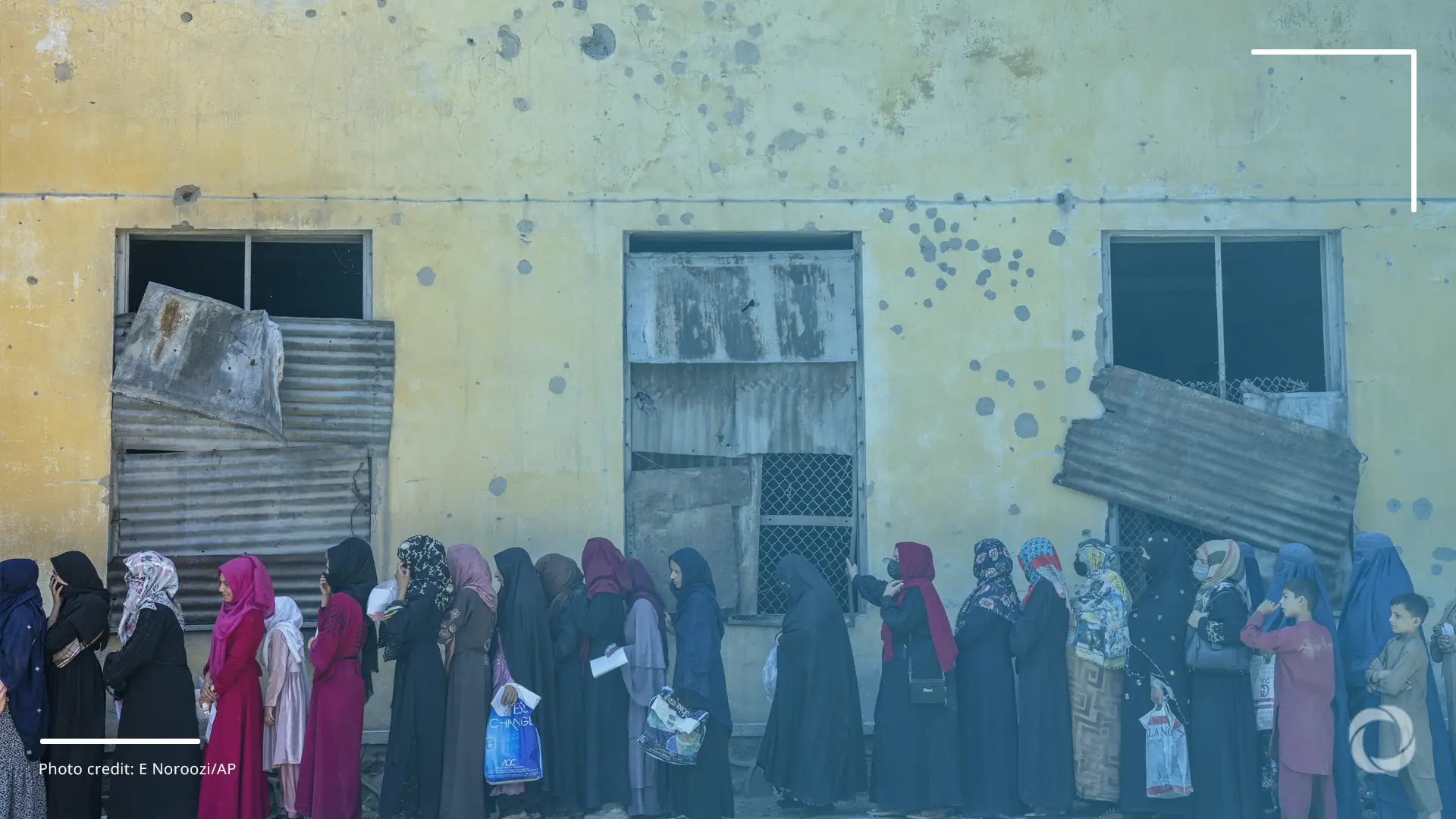Daily life in Afghanistan has become a struggle for survival. Families are skipping meals, and children are walking long distances for water, while healthcare is often out of reach. These hardships reflect the reality of life for millions of Afghans who are living through one of the world’s most complex and severe humanitarian crises since the Taliban regained power in August 2021, The sharp decline in international aid amid shifting donor priorities, rising geopolitical tensions, and operational challenges on the ground have left the humanitarian sector struggling to keep pace with the country’s growing needs.
Aid under strain
The 2025 Humanitarian Needs and Response Plan estimated that nearly 23 million people – over half of Afghanistan’s population – required urgent humanitarian assistance. Yet, funding gaps and restrictions, including those imposed by the Taliban, are limiting the reach, monitoring, and effectiveness of aid in both urban and remote areas.
Afghanistan’s Ambassador to Italy and Permanent Representative to the UN agencies stationed in Rome, H.E. Khaled Ahmed Zekriya, told DevelopmentAid that while international donors remained committed to alleviating suffering, aid delivery had become far more complex since 2021. He explained that cautious donor approaches – intended to prevent legitimizing the Taliban regime and minimize the diversion of aid – had shifted assistance channels primarily through UN agencies and international NGOs which has created a less sustainable aid architecture.
Global shifts vs local consequences
Since August 2021, humanitarian assistance to Afghanistan has changed profoundly, Zekriya explained. While emergency support for food security, health services, and education retained paramount importance, global conflicts such as the Russia-Ukraine and Israel-Gaza wars shifted donor focus and limited funding channels. He added that aid had become more fragmented due to the reliance on UN and NGO mechanisms rather than Taliban administrative units.
The largest donors remained the US, the UK, Canada, the EU, Germany, Japan, some Gulf states, and multilateral agencies such as the World Bank, the Asian Development Bank, and the UN, but some countries and agencies have cut commitments by more than 75%. The US halted approximately US$1.7 billion in contracts earlier in 2025, followed by similar decisions by the UK, France, and Germany, reducing total humanitarian aid from US$3.8 billion in 2022 to US$785 million as of 17 September 2025.
The European Union allocated €161 million (US$176 million) in 2025, focusing on humanitarian partners rather than Taliban-controlled state channels but, as Zekriya commented, this move prioritizes short-term relief over long-term resilience.
Fragmented assistance and operational barriers
Although international donors provided US$10.72 billion in aid from August 2021 to April 2025, the humanitarian system has become increasingly fragmented as aid agencies operate under increasingly heavy restrictions. Taliban interference in agency staffing and the selection of beneficiaries have undermined both access to and the effectiveness of aid while security issues and logistical barriers hinder access to remote districts, Zekriya commented.
An Afghan humanitarian aid officer, who preferred to remain anonymous, described to DevelopmentAid the severe operational hurdles in Afghanistan’s humanitarian landscape today.
“Restrictions imposed by de facto authorities, pervasive lack of transparency, and bureaucratic impediments severely hamper reliable reporting and monitoring.”
He added that these systemic challenges “undermine accountability and erode donor confidence,” weakening aid effectiveness.
He emphasized how such difficulties “lead to a fragmented humanitarian landscape where aid struggles to reach the most vulnerable impartially.”
Aid diversion and discrimination
The aid officer also highlighted the diversion of aid through entrenched local power dynamics and governance interference, stating that such interference disproportionately harms marginalized groups whose access remains constrained by restrictive policies and social exclusion.
Vulnerable groups such as women, girls, children, and ethnic and religious minorities have suffered disproportionately due to Taliban policies and discriminatory practices. The U.S. Special Inspector General for Afghanistan Reconstruction reported that the Taliban uses force and regulatory powers to divert aid to favored communities and block minorities, and they allegedly collude with UN officials to extort kickbacks.
The human cost of fragmentation
The uneven distribution of aid leaves urban centers somewhat better served, although they are still subject to Taliban restrictions. Meanwhile, rural and hard-to-reach areas remain chronically underserved. This gap is especially critical given that the majority of Afghans – over 30 million people – live in rural areas, compared to about 12 million in urban centers.
Women and girls in particular face multiple layers of exclusion as Taliban policies and social restrictions frequently exclude them from receiving aid, education, and healthcare, thereby deepening their vulnerability.
In the face of continued interference from the Taliban authorities, the humanitarian response is struggling to meet the immense and growing needs of Afghanistan’s people. Ensuring that aid is distributed impartially and comprehensively has become increasingly challenging despite the monitoring efforts of UN agencies and international NGOs.

